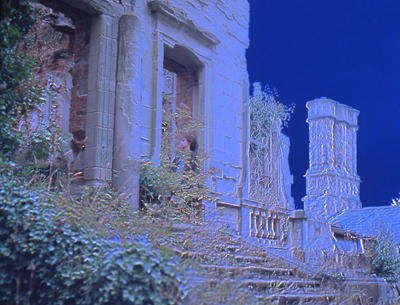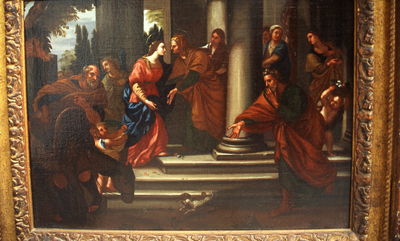The States General
Frank Auerbach, Benvenuto Garofalo, Catherine Yass
6 March – 12 April 1996
Rear Window, Galerie 5020, Salzburg, Austria
The States General were held in May and June 1789 at Versailles, France in a great hall built for games and arts events. Called by Parliament, this meeting reunited in front of King Louis XVI, Queen Marie Antoinette, and the Prime Minister Necker, the three main estates representing France: the clergy, the nobility and the people.
Surrounded by simple symbolic reminders of the powers of Kings in France (a shield, a scale of justice and a portrait of Louis XIV healing the sick), the King sat on a throne of gold and brocade. One his left, sat the nobility, on his right, sat the clergy and in front of him, the third estate or representatives of the people. In order to maintain tradition, the nobility was dressed in blue and white, the clergy in red and brown and the third estate in black.
On 5 May 1789, the opening day of the States General, the King stood and said: “Gentlemen, it looks as if the spirits of France have been taken over by a general concern and an exaggerated desire for change.” The meeting continued discordantly with an argument on the voting system. After a month of arguments, the third estate, tired of its lack of power imposed by the voting system, formed itself independently in National Assembly on 17 June 1789. This Assembly later forced the nobility and the clergy to join them and decide on the future of France without the King.
This meeting symbolised the first political assessment of the country’s social landscape for 150 years and established the power of the third estate as the leading governing body. Ultimately, the States General represented the starting point of the French Revolution.
The structure of this historical event is used here with the aim of assessing the role of curatorship in contemporary art. In a room designed for the exhibition of art objects, similar in that way to Versailles’ great hall, Rear Window presents three portraits of curators, each symbolising the three orders which have played a key role in the staging of art past and present. The clergy (Benvenuto Tisi da Garofalo’s The Virgin Visiting St. Anne), the aristocracy (Catherine Yass’s Guy’s Cliff Portrait, No. IV), and the third estate (Frank Auerbach, Catherine Lampert, No. II).
These three portraits represent three different kind of curator. The church, with a religious painting by Garofalo picturing the donor of the work. The aristocracy, with a photograph by Catherine Yass representing the curator Paul Heber-Percy amongst the ruins of his ancestral castle. And the third estate, with a portrait by Frank Auerbach of the curator Catherine Lampert, Director of the Whitechapel Art Gallery in London.
Through this historical and thematic reading, this exhibition confronts forms of visibility (the curator in history) and representation (the curator in painting). It wishes to offer a selection of work where the role of the subject depicted is as important as the tehnique used or the artistic movement it belongs to. It also wishes to link up the newly devised profession of curator in contemporary art within a long tradition of donors, commissioners and patrons.
These three works are complemented by a number of conducting batons in carrying case. The story is told of a lady who exclaimed ecstatically to Serge Koussevitzky after a concert: “Doctor Koussevitsky, to us you are God!”, to which he replied: “I know my responsibility.” This reply reflects in colourful terms the traditional role of conductors in classical music. With the possible exception of the internationally renowned soloists, the conductor is the most sought after performer in classical music today. Moreover, he (rarely she) possesses two advantages over soloists. In performance, he enjoys an authority unmatched by any other musician, who must—to some degree—perform as part of a team, and whatever the restrictions or his power to hire or fire players, or the pressure direct and indirect from his employers, the conductor comes closer than any performing artist to achieve complete control over the performance of others.
Can one say the same of curators? The conducting batons displayed on the gallery floor therefore ask the following questions: who decide what, what was played where, what is shown, what is omitted, what influence on the work of the artists have the curator’s decisions generated and last, but not least, can one say that curators, like conductors, are artists in their own right?



